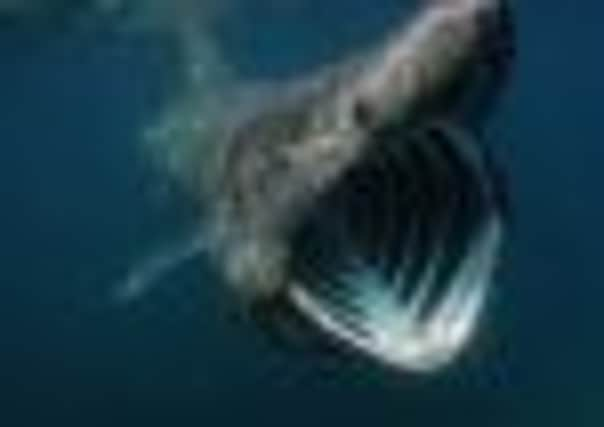Secrets of basking sharks to be revealed as public will track movements online


• Satellite tags to let public follow movements of sharks online
• 20 sharks to be tracked around Inner Hebrides
Scientists will attach satellite tracking tags to 20 of the sharks in the seas around the Inner Hebrides, off the west coast.
Advertisement
Hide AdAdvertisement
Hide Ad

Their activity can then be viewed on the Scottish Natural Heritage (SNH) website in close-to-real time.
The project is being carried out by marine biologists from SNH and the University of Exeter in a bid to learn more about the shark – the second largest fish after the whale shark.
The tagging work is starting today in the waters around Coll and Tiree, and the small island of Hyskeir, near Canna, popular hotspots for the fish.
Even though basking sharks are seen in many places around the Scottish coast, displays of social and courtship behaviour, such as breaching and following each other nose-to-tail, have only been observed in these areas, suggesting they are important for key stages in their lives.
The tags will provide information on the location and behaviour of the sharks during the summer when they can be seen feeding in large numbers at the surface – appearing to be “basking”.
They will also track the sharks for several months afterwards, helping scientists establish whether they travel to deeper water around Scotland and further afield over the winter.
Dr Suz Henderson of SNH, who is managing the project, said: “We’re really lucky to have the world’s second largest fish visit our waters every summer but we know very little about their movements throughout the rest of the year.
“We want to know how the sharks use the waters between Skye and Mull and how long they remain in the area.
Advertisement
Hide AdAdvertisement
Hide Ad“We’d also like to find out how important this area is in the life cycle of the sharks, and if some areas are used more than others. The results from this project will help to answer these questions.
“In addition, an area between Skye and Mull has recently been identified as a place where it might be appropriate to develop a marine protected area to protect basking sharks.”
The tags, attached to the sharks using titanium darts, will record information on their movement as well as depth and water temperature. They will detach after several months.
Dr Henderson added: “The tags might be washed up on beaches and if we are able to retrieve them they will provide us with additional information.
“We’ll be asking the public to keep an eye open for them.”
Dr Matthew Witt of the University of Exeter said: ““This is a hugely challenging project – not least because we are at the mercy of the weather and sea conditions – but the results will provide invaluable in our quest to uncover the secrets of these giants of the sea and help to protect them.”
The area where the study is being undertaken overlaps with an offshore wind farm proposal west of Tiree, known as the Argyll Array.
The tagging project will also provide information about the use of this area by the sharks, giving additional confidence to the advice which SNH provides to Marine Scotland as the development goes through the licensing process.